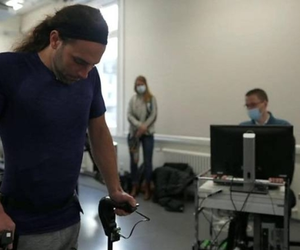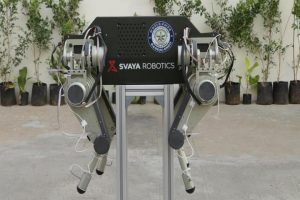In a major medical breakthrough, a paralysed man with a severed spinal cord has been able to walk again, with an implant developed by a team of Swiss researchers.
It is the first time someone who has had a complete cut to their spinal cord has been able to walk freely again.
The research has been published in the journal Nature Medicine.
Michel Roccati was paralysed after a motorbike accident five years ago. His spinal cord was completely severed – and he has no feeling at all in his legs.
But he can now walk – because of an electrical implant that has been surgically attached to his spine.
"I stand up, walk where I want to, I can walk the stairs – it's almost a normal life," BBC quoted Roccati as saying.
The implant sends electrical pulses to his muscles, mimicking the action of the brain, and could one day help people with severe spinal injuries stand, walk and exercise.
He was one of three patients involved in the study, published Monday in the journal Nature Medicine, all of them unable to move their lower bodies after accidents.
Also Read: India asks its citizens in Canada to 'remain alert' amid truckers protest
The three were able to take steps shortly after the six-centimetre implant was inserted and its pulses were fine-tuned.
Those initial steps were difficult and required support bars and significant upper body strength.
But the patients could start rehabilitation immediately, and within four months Roccati could walk with only a frame for balance.
"These electrodes were longer and larger than the ones we had previously implanted, and we could access more muscles thanks to this new technology," said Jocelyne Bloch, a neurosurgeon at the Lausanne University Hospital who led the trial.
"It's not that it's a miracle right away,” said Gregoire Courtine, a neuroscientist at the Swiss Federal Institute of Technology who led the research with Bloch.
But with practice, Roccati can now stand for several hours and walk nearly a kilometre. The Italian described being able to look clients in the eye, have a drink at a standing table and take a shower standing up thanks to the implant.
He and others in the trial were also able to climb stairs and swim and canoe.
The improvements depend on the electrical stimulation, which is triggered via a computer carried by the patient that activates a pattern of pulses.
The three men in the new trial were all injured a year or more before the implant and Bloch hopes to try the technology sooner after an accident. She expects the treatment to be more effective in such cases.
The team cautioned that significant work remains before the implant is available for treatment outside clinical studies, but said they receive around five messages a day from patients seeking help.
They plan to reduce the size of the computer controlling the pulses so it can be implanted in patients and controlled with a smartphone. This is expected to happen this year.
They also plan to carry out large-scale trials involving 50-100 patients in the United States and then Europe.




















